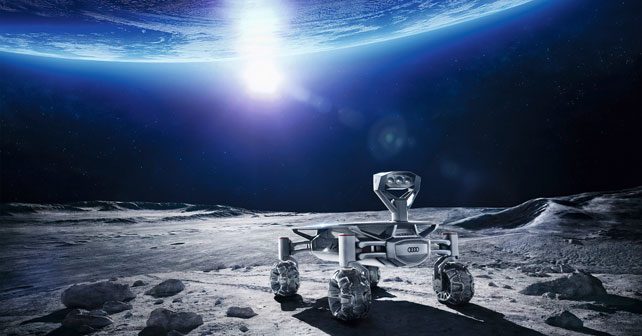
Approximately 384,000 kilometres from us resides a small star that we see in the night sky every evening. We earthlings call it ‘The Moon.’
This lonely star that orbits around us every day, littered with the silence of the enormity of space, is one that we’ve claimed as our own. It’s become a prize of sorts! So much so that we don’t want to just admire it, but we want to set foot on it – just to demonstrate the power and audacity of the human species.
The moon is our only natural satellite, and we humans are so fascinated with it that we went there just because… we could. Many astronauts walked on its surface, and a few of them even drove a lunar buggy for about 90 kilometres. Since then, the United States, Russia, and even China, have made rovers to explore the surface of the moon – looking for clues of signs of life. The Rovers that followed were either programmed to carry out specific tasks, or were controlled remotely from Earth. Unfortunately, none of them ever made it back. They lie there on the surface gathering moon dust.
Well, Audi recently announced that they’ve entered the Google Lunar XPrize challenge to build a lunar rover in collaboration with a group of scientists from Berlin who call themselves ‘Part-Time Scientists’ to chart ‘a mission to the moon.’ To win, a team must be at least 90-percent privately financed, and transport an automated vehicle to the moon. The rover must drive at least one-and-a-half kilometres on the moon’s surface and transmit high-resolution images and video footage back to Earth. By the end of 2017, the ‘Audi Lunar Quattro’ must be transported to its slated Russian launch site for a 5-day long journey to a landing spot not far from that of Apollo 17 – the final manned US lunar mission.
Many of the rover’s components are made of high-strength aluminium, and it weighs just 35 kilograms. In continued development, its weight will be further reduced by the use of magnesium – even though the vehicle might grow somewhat in size. A swivelling solar panel captures sunlight, and the electricity it generates is fed to a lithium-ion battery that powers the four wheel-hub motors. All four of its wheels can be rotated 360-degrees.
The first aim is to secure the prize money of $30 million. Audi will impart their knowledge and expertise in lightweight design, technical know-how, and their expertise in the Quattro permanent all-wheel drive system and electrical e-tron drive system. The prototype of the rover has already been awarded with accolades that’ll help them with their budget.
If the Audi Lunar Quattro actually makes it onto the surface of the moon, perhaps it’ll run into the US lunar buggy that’s been left untouched since 1972. Well, we think it’s remained untouched…
“We choose to go to the moon in this decade, and do the other things, not because they are easy, but because they are hard, because that goal will serve to organise and measure the best of our energies and skills, because that challenge is one that we are willing to accept, one we are unwilling to postpone, and one which we intend to win.”
John F. Kennedy, September 1962, Houston, Texas























Write your Comment